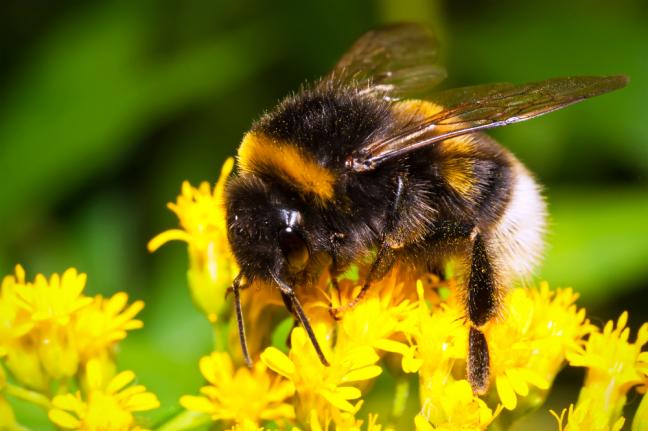Bee Populations Face Another Threat: Aluminum

KEELE, England, June 5 (UPI) — Researchers have found high concentrations of aluminum in bee populations, suggesting contamination by the silver-gray metal could be partially responsible for the insect’s decline.
Aluminum is one of the most abundant contaminants in nature. And previous studies have shown bees fail to actively shy away from aluminum-tainted flower pollen. Researchers hypothesized that significant amounts of aluminum might result in neurological problems among the bees — an inability to forage, or find one’s way back to the colony.
To see if bees were accumulating high amounts of aluminum over the course of their lifecycle, researchers in England collected pupae from colonies of naturally foraging bumblebees and sent them off to be tested.
Lab scientists at the University of Keele found the adolescent bumblebees to be heavily contaminated — just as the researchers at the University of Sussex had suspected.
Aluminum counts ranged from 13 parts per million to nearly 200 parts per million, with the smallest pupae hosting the highest concentrations. For perspective, an aluminum concentration of just 3 parts per million in human brain tissue can prove fatal.
“It is widely accepted that a number of interacting factors are likely to be involved in the decline of bees and other pollinators — lack of flowers, attacks by parasites, and exposure to pesticide cocktails, for example,” Chris Exley, an expert on aluminum exposure in humans and a professor at Keele, explained in a press release.
“Aluminium is a known neurotoxin affecting behaviour in animal models of aluminium intoxication,” said Exley. “Bees, of course, rely heavily on cognitive function in their everyday behaviour and these data raise the intriguing spectre that aluminium-induced cognitive dysfunction may play a role in their population decline — are we looking at bees with Alzheimer’s disease?”
While it will take more testing to confirm what role aluminum is playing in declining bee health, it wouldn’t be the first time aluminum harmed plants and animals in the wild.
Aluminum has been found responsible for fish kills in acid lakes, and the acidic ecotoxicant has also been blamed for thinning forests and low crop yields.
Its potential role in harming wild bumblebees was detailed in the online journal PLOS ONE.





